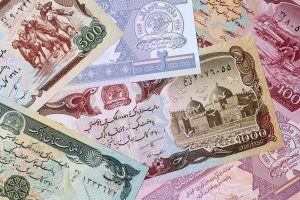A recent response from a U.S. government watchdog to a Congressional request for a report on the Afghan Fund underscores considerable barriers surrounding the future of the fund’s $3.5 billion, half of the $7 billion in Afghan central bank assets seized by the United States in the wake of the Afghan Republic’s collapse in August 2021.
In a January 4 report made public on January 8, the Special Inspector General for Afghanistan Reconstruction (SIGAR) replied to a March 2023 inquiry from Congressman Michael T. McCaul, chairman of the House Foreign Affairs Committee. The inquiry, among other things, sought a report from SIGAR on the Afghan Fund.
The Switzerland-based Fund for the Afghan People was created in September 2022 with a mandate to to disburse $3.5 billion in assets belonging to Afghanistan’s central bank (Da Afghanistan Bank, or DAB) in support of Afghanistan’s macroeconomic stability. The Fund’s board consists of just four people: two Afghan nationals — Dr. Anwar ul-Haq Ahady and Dr. Shah Mehrabi — along with U.S. Under Secretary of the Treasury for International Affairs Dr. Jay Shambaugh and Ambassador Alexandra Baumann, the head of the prosperity and sustainability division at the Swiss Federal Department of Foreign Affairs (FDFA). The two Afghan nationals were selected (State, in its response to SIGAR prefers the terms “identified” and “certified”) by the U.S. State Department.
The Fund’s purpose, per its articles of association are to “receive, protect, preserve, and disburse” the assets it holds “for the benefit of the Afghan people.” Precisely how, when, and to what ends remain unanswered questions. To date, no disbursements have been made.
SIGAR’s report notes that at present, “[The U.S. departments of] Treasury and State are not currently willing to support a return of funds to DAB.”
Treasury and State say that they will not support transfers of money to DAB until the Afghan central bank “implements adequate anti-money laundering and countering-terrorist-financing controls (AML/CFT)” and can “demonstrate its independence from political influence and interference.”
Given that DAB’s top three officials are senior Taliban leaders under sanction by both the U.S. and the United Nations, the latter provision is far from being fulfilled. As for the first, Treasury and State are not convinced either.
In February 2023, USAID supported a third-party assessment of DAB, the results of which have been a bone of contention. SIGAR’s report notes that the assessment “completed in March 2023 identified weaknesses in DAB’s enforcement of AML/CFT measures” and Treasury referred to the assessment as merely “preliminary.”
In October 2023, Catherine Cartier reported for the The Diplomat that the assessment had not been shared with the board’s Afghan members, a detail SIGAR confirmed in its report. “In [a December 2023] response to a draft of this report, Treasury told SIGAR that it has now provided a copy of the assessment to the Afghan Fund’s board of trustees and executive secretary.”
In its report, SIGAR stated that “there are currently no controls in place that specifically address the issue of Taliban diversion” of funds, a major sticking point for U.S. officials, both within the executive branch and Congress alike. From SIGAR’s report, it appears that there are efforts underway to develop further safeguards, as those that do exist are not specifically related to the Taliban. For example, disbursement decisions can be made only by unanimous vote of the board of trustees, meaning that any one of the four board members can veto a disbursement.
That aside, SIGAR noted with concern the fact that one of the Afghan board members, Mehrabi, is also a member of DAB’s governing body, the Supreme Council, creating a potential conflict of interest. At issue: “It is also unclear who determines whether a conflict of interest exists or how it is defined” when it comes to the Afghan Fund.
Furthermore, SIGAR wrote in its report that “one of the individuals [the State Department] selected to be a fiduciary of DAB’s assets was fired from a previous position for misrepresenting his credentials, raising questions about the adequacy of State’s vetting process.” The individual is not named in the public report, but it’s a potential pool of two.
There’s a lot to pour through in the SIGAR report, and the back and forth with State and Treasury illuminate shades of bureaucratic territoriality and differences of viewpoint, if not fact. Beyond the scope of the the report, and far beyond SIGAR’s mandate to provide oversight (and that mandate has been questioned by some federal agencies, which like to point out that the U.S. government’s reconstruction efforts concluded in August 2021) is the reality that the people of Afghanistan continue to suffer. The Afghan Fund is not intended for humanitarian or development assistance, but it’s hard to separate the financial welfare of the Afghan state from the conditions of the people — just as it is difficult to disentangle the Afghan state as it is today from the Taliban.

































